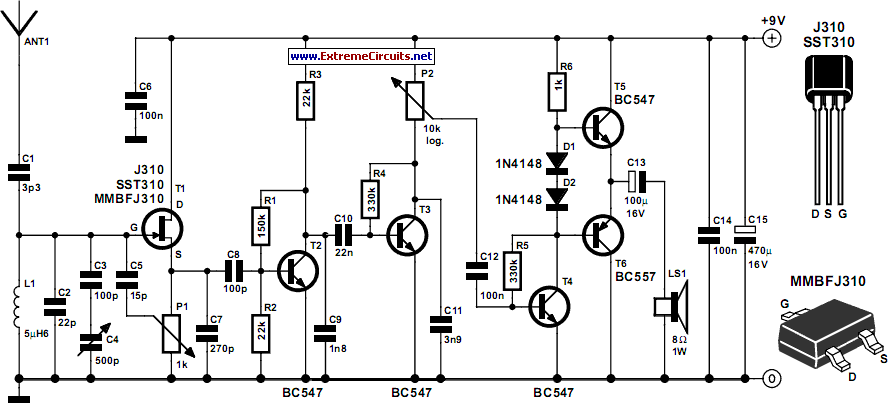

L1 is stretched to a length of 13mm evenly, which is formed by the 1mm enamelled copper wire winding of 8 turns. The first stage TR1/VC1 of FM radio receiver circuit, to keep wirings as short as possible, is a critical part. So, an audio amplifier is used for amplifying the output to generate a clear loud audible output. The output power of FM transmitters is much smaller than that of the AM transmitters. This extraction of original information from carrier wave digital data using demodulator circuit consisting of staircase maker and the delay unit for creating an analog signal is called as demodulation process. The information content can be recovered from the modulated carrier wave using an electronic circuit in the FM radio receiver called as a demodulator. The main function of the IF filter or intermediate frequency filter is to eliminate frequencies, other than intermediate frequency by filtering. The main reason for converting the RF to IF is due to poor performance of signal processing circuitry and failure of active devices, such as transistors to deliver much amplification. In transmission or reception process, carrier frequency is shifted to a frequency called as intermediate frequency which is created using a local oscillator and mixing the carrier signal through the heterodyning process. The actual radio frequency is converted into an intermediate frequency. It is a subsystem for receiving radio frequency transmissions and to convert selected carrier wave frequency along with associated bandwidth into a fixed frequency, which is suitable for further processing as frequently low frequency is used on the output. The simple and best FM radio receiver circuit consists of RF tuner, RF to IF converter, IF filter, demodulator and audio amplifier. Irrespective of carrier frequency, the demodulator of the radio receiver has to work with all radio stations.Should filter out all other radio stations except the desired one.Must be able to tune and amplify the desired the radio station.But, in this system, receiver is chosen which will work with FM signals. In general, radio receiver must work with AM signals and FM signals.The AM/FM two band receivers are frequently used because of their advantages compared to single band receivers. But, at the same time, we must choose economical radio receiver. The radio systems must be sufficient to receive all types of audio sources simultaneously because at a time several users or listeners may tune to multiple radio stations. Similarly, best FM radio receiver consists of a demodulator that works with all radio stations irrespective of carrier frequency.


The transmitter consists of modulator, and different signals are transmitted from various stations and sources. The receiver must be able to tune and amplify to work with FM signals by filtering out all other undesired stations.
#All band receiver radio circuit Pc#
There are different types of radio receivers: PC controlled radio receivers, analog radio receivers, digital radio receivers, and so on. The below figure shows a basic block diagram of an FM transmitter. These FM radio transmitters consist of different blocks and can be designed by ourselves with simple electrical and electronics projects. The FM radio transmitter transmits data (mostly sound or audio signals in case of radio) using FM wave over a carrier wave whose frequency is corresponding to the audio signal amplitude. For transmitting data, primarily data have to be modulated using modulation techniques such as amplitude modulation or frequency modulation. But, are you aware of working of these FM transmitter and receiver circuits? Introduction to Wireless Radio Transmitterįirst and foremost, we must know how the data is transmitted from the transmitter end such as a radio station to receiver at receiver end. The entire system depends on the FM radio transmitter to transmit the data from the transmitter end to the receiver end. In 1933, a revolutionary change was made by Armstrong in the broadcasting business with FM radio. In our day-to-day life we frequently got used to listen the news, music and other programs through FM radio station by tuning to our favorite bands with wireless transmission and reception of data. Edwin Armstrong developed super-regenerative circuits and super-heterodyne receiver, which made radio broadcasting successful.


 0 kommentar(er)
0 kommentar(er)
